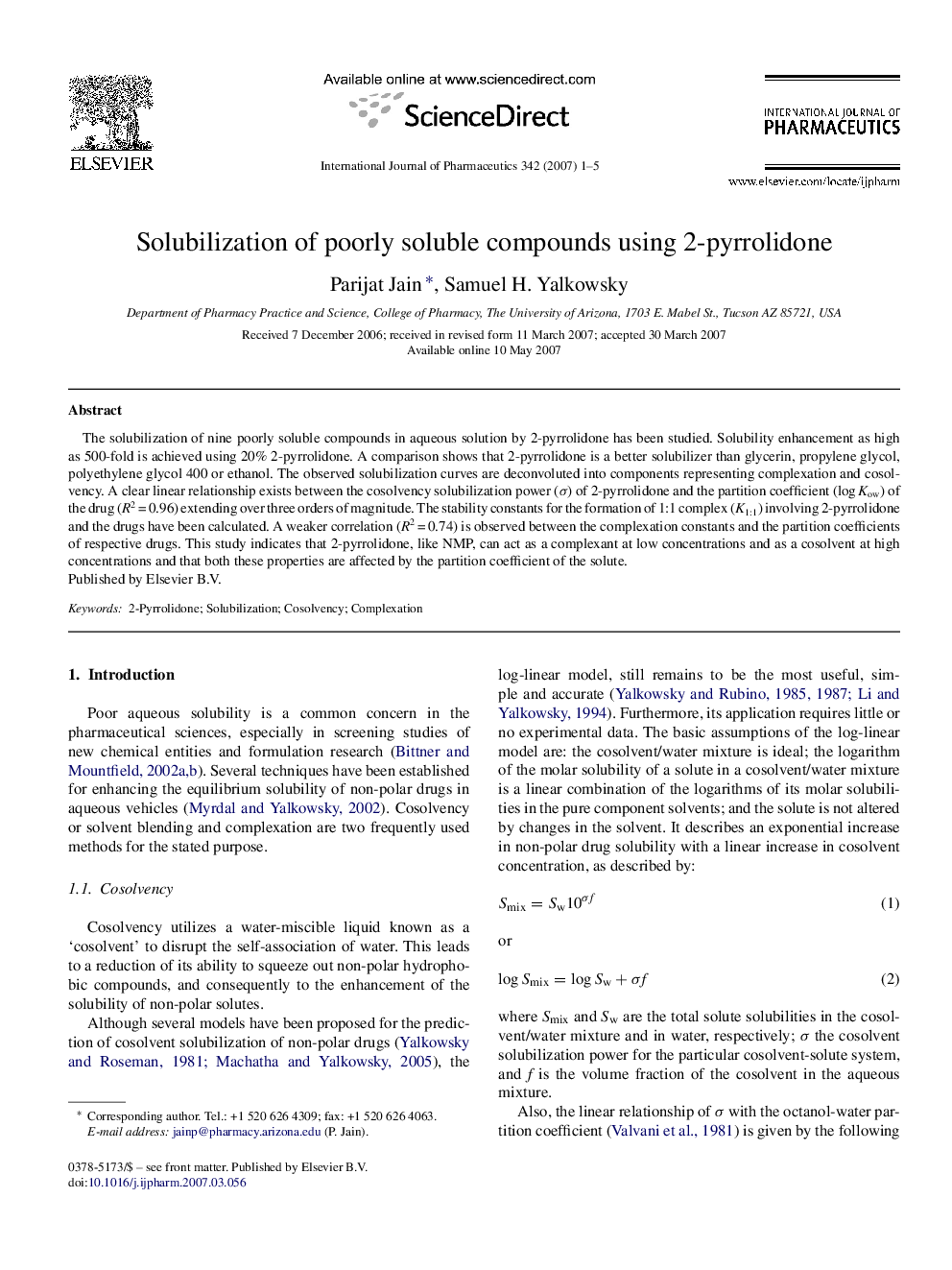| Article ID | Journal | Published Year | Pages | File Type |
|---|---|---|---|---|
| 2505935 | International Journal of Pharmaceutics | 2007 | 5 Pages |
The solubilization of nine poorly soluble compounds in aqueous solution by 2-pyrrolidone has been studied. Solubility enhancement as high as 500-fold is achieved using 20% 2-pyrrolidone. A comparison shows that 2-pyrrolidone is a better solubilizer than glycerin, propylene glycol, polyethylene glycol 400 or ethanol. The observed solubilization curves are deconvoluted into components representing complexation and cosolvency. A clear linear relationship exists between the cosolvency solubilization power (σ) of 2-pyrrolidone and the partition coefficient (log Kow) of the drug (R2 = 0.96) extending over three orders of magnitude. The stability constants for the formation of 1:1 complex (K1:1) involving 2-pyrrolidone and the drugs have been calculated. A weaker correlation (R2 = 0.74) is observed between the complexation constants and the partition coefficients of respective drugs. This study indicates that 2-pyrrolidone, like NMP, can act as a complexant at low concentrations and as a cosolvent at high concentrations and that both these properties are affected by the partition coefficient of the solute.
